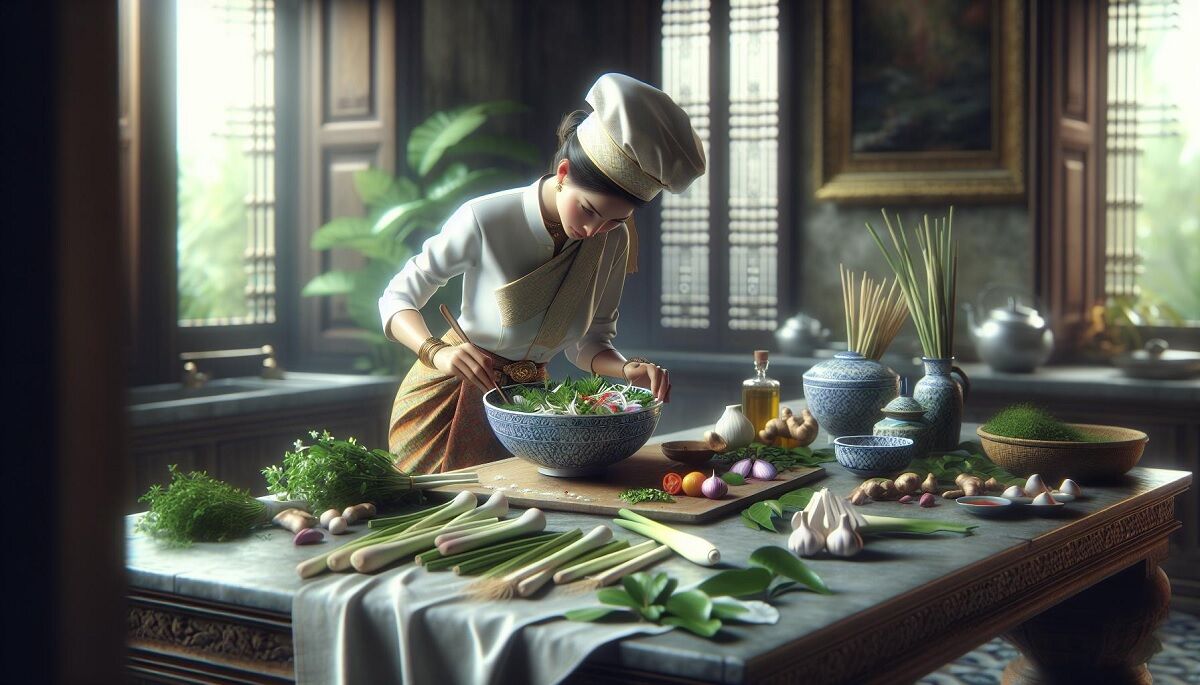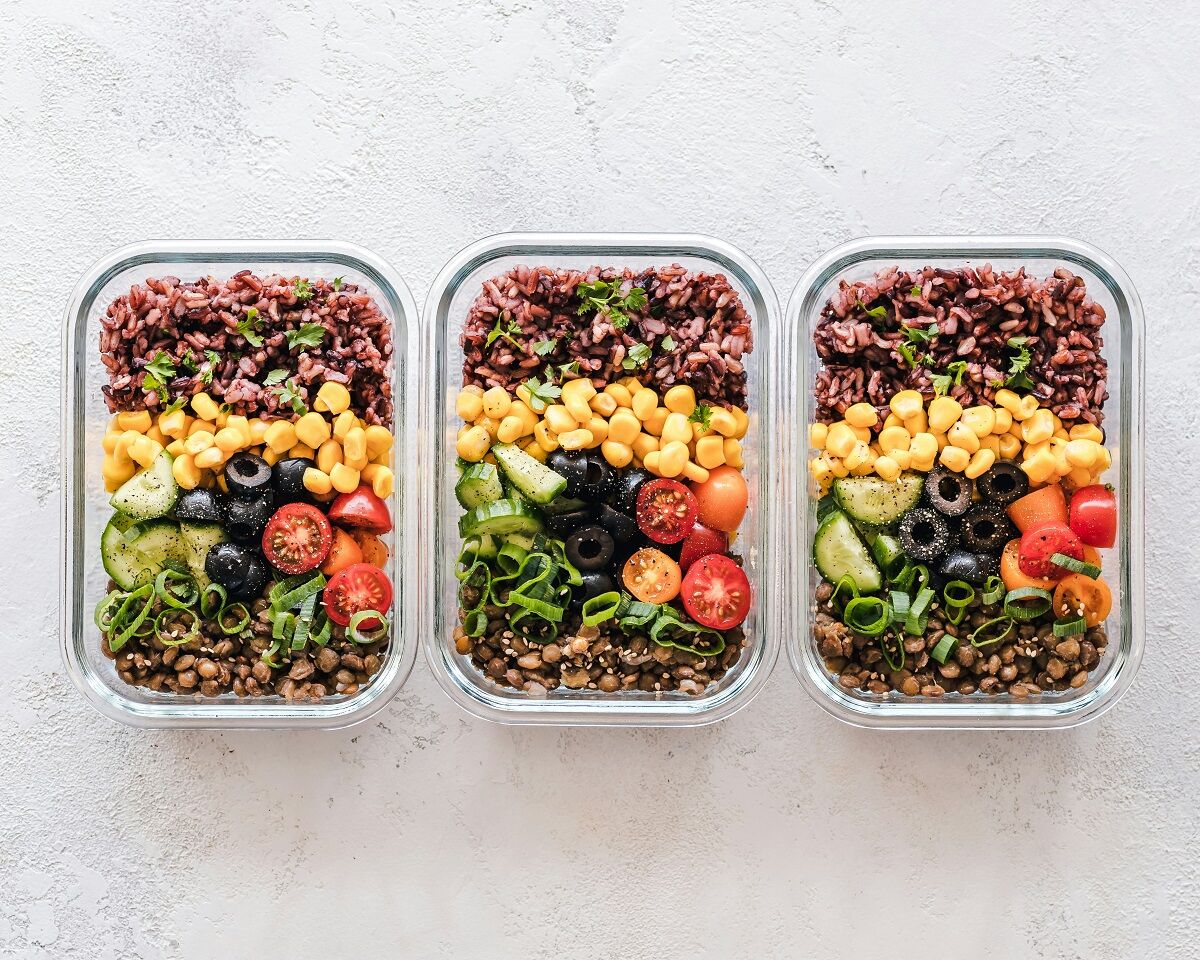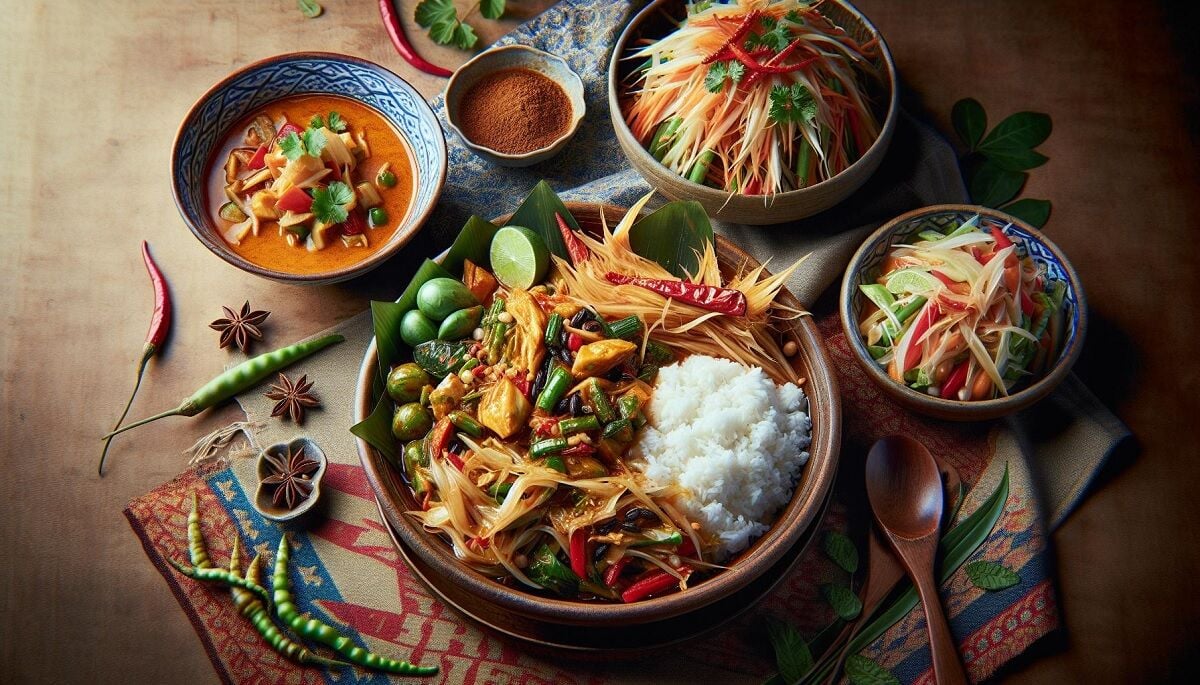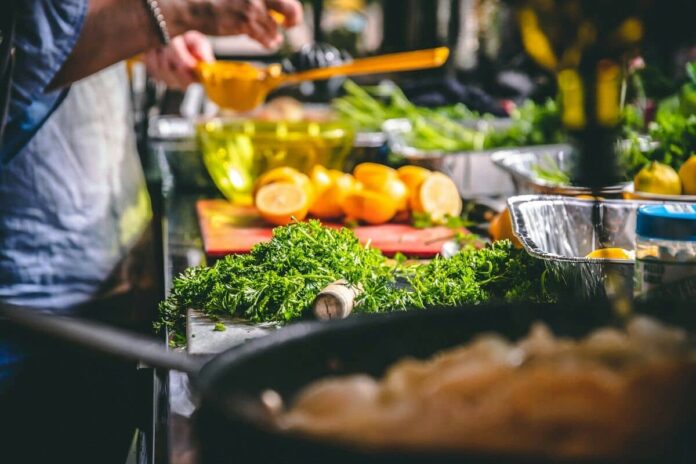Have you ever contemplated the veracity of prevailing nutritional misconceptions in Thailand? You are certainly not alone. It can be remarkably straightforward to be influenced by vibrant food fallacies, particularly when they are ingrained in the tapestry of a culture as rich and varied as Thailand’s.
Negotiating the labyrinth of nutritional guidance can be intimidating, with diverse sources ranging from your neighbourhood street merchant to the world wide web, proposing differing perspectives. This article endeavours to dispel some of the most prevalent myths associated with Thai nutrition, providing the lucidity you require to relish Thailand’s gastronomic delights in their entirety.
Therefore, whether you are a health-conscious voyager or a local epicure, let us delve into the realm of Thai nutrition and adjudicate between fact and fiction.
Common misconceptions about Thai nutrition
Let’s explore and debunk some of the common myths surrounding nutrition in Thailand.
1: Thai food is always spicy
In actuality, Thai cuisine varies greatly in spiciness. Many recipes indeed use chillies, but often, the intensity is tailored to the individual’s liking. Your spice tolerance doesn’t limit your Thai food exploration, many Thai dishes sit comfortably on the mild to moderately spicy scale.
2: Eating meat Is essential for protein and calcium
A balanced diet provides ample nutrients. With a variety of legumes, tofu, nuts, seeds, and leafy green vegetables available, these ingredients within Thai dishes can supply the necessary protein and calcium your body needs, complicating the meat-necessity notion.
3: Plant-based diets lack sufficient nutrients

This myth overlooks the nutrient-rich plant foods in Thai cuisine, such as citrus fruits, colourful vegetables, and herbs. They deliver necessary vitamins, minerals, and antioxidants. You’ll find that Thai cuisine offers plenty of naturally nutrient-dense vegetarian and vegan dishes.
4: Carbs are your enemy
This myth couldn’t be more misguided. Traditional Thai dishes often incorporate complex carbohydrates like rice and root vegetables which are beneficial to your health, providing the energy your body requires rather than packing on the pounds.
5: All low-fat foods are calorie-free
It’s false to assume all low-fat foods are low in calories. Some Thai dishes, such as certain coconut milk-based curries can still be high in calories despite being low in saturated fat. Check the full nutritional context before tagging a dish as ‘low-calorie’.
6: Quick weight loss can be achieved through supplements
No magic pill provides a shortcut to weight loss. It is always a result of a balanced diet and regular exercise. Thai cuisine, when chosen correctly, can contribute to a healthy diet, more than any supplement promising a shortcut.
7: Eating after 6 P.M. causes weight gain
It’s more about what and how much you eat, not when. Sensible portions of wholesome Thai dishes, eaten mindfully at any time, won’t cause weight gain. It is consistent indulgence in high-calorie, low-nutrient food that packs on pounds, regardless of the time consumed.
8: Gluten Is Unhealthy for Everyone
Unless you’re diagnosed with celiac disease or a gluten intolerance, there’s no need to avoid gluten. Many gluten-containing Thai dishes, such as those with soy sauce, can be part of a balanced diet.
9: Detox diets effectively purge toxins
The fact is, our bodies come fully equipped with detoxifying systems. Eating a balanced diet filled with fruits, vegetables, and lean proteins as seen in Thai food, keeps these systems functioning well.
10: More exercise means more eating
What matters is the balance of calories in versus calories out. While intense workouts might spike hunger, they don’t necessitate feasting. Opt for nutrient-rich Thai dishes that satiate hunger while providing the necessary fuel for your body.
Debunking nutrition myths: Thai food context

Allow us to scrutinize prevailing misconceptions concerning nutritional aspects, with particular emphasis on Thai culinary tradition.
How Thai cuisine can be part of a balanced diet?
Have you ever considered the complex domain of Nutrition in Thailand? The unique nature of Thai cuisine, with its bizarre enchantments to many, holds a significant spot in shaping a wholesome and balanced diet. Composed of a rich array of fresh fruits, vegetables, lean proteins, seafood, and hardy grains, Thai food is not merely palatable but also a conduit for nourishment.
What contributes significantly to its unique appeal? It is the liberal usage of herbs and spices—such as lemongrass, holy basil, and turmeric—that bestows upon it a distinct character. These embellishments don’t merely enhance the flavour but are also acknowledged by scientific research for offering a myriad of health benefits. For instance, turmeric has been identified late for its significant anti-inflammatory and antioxidant characteristics.
It is imperative to note, however, that consuming Thai food does not necessitate a constant play of spiciness, crunchiness, or sweetness. Indeed, it may be challenging to restrict oneself from engaging in aromatic spices, crispy delicacies, or sugared desserts, but portion control can be key to maintaining a balance in calorie consumption while still savouring the vibrant array of flavours Thai cuisine provides. It isn’t about complete elimination from your diet, but about strategic integration.
Managing portions and varieties in Thai cuisine
The concept of “Portion Control” operates as a crucial element in dismantling misconceptions about nutrition. Achieving an optimal balance of micronutrients remains a requisite, even within the parameters of Thai culinary practices. Regardless of whether it encompasses piquant curries or comforting noodle broths, careful monitoring of portion sizes substantially supports the control of caloric ingestion.
Equally important is embracing variety. Thai cuisine offers a plethora of choices from fresh salads like Som Tam (papaya salad) to stir-fried dishes like Pad Krapow (Holy basil stir fry). Balancing these out with controlled servings of rice ensures a nourishing mix of protein, fibre, and carbs.
No matter how appetising your food appears, monitor your consumption to ensure it aligns with your overall dietary plans. Awareness of portions and variety is vital in reaping the benefits Thai cuisine has to offer.
Breaking away from these misconceptions and maintaining a balanced approach can unlock the true potential of Thai cuisine, making your journey through ‘Nutrition in Thailand’ a delightful experience.
Discovering true Thai nutrition

In our analysis of the top ten prevailing misconceptions about nutrition in Thailand, we have successfully debunked these fallacies, thereby illuminating the authentically nourishing attributes of Thai cuisine. It is paramount to remember that equilibrium is key. Hence, one should indulge in the robust flavours of lemongrass, turmeric, and other beneficial herbs and spices. Nevertheless, careful consideration should be given to portion sizes when consuming dishes that are spicy, fried, or sweet. The objective is not to eliminate these foods but to exercise moderation.
With knowledge of this culinary tradition, it paves the way for a profound appreciation and comprehension of the diverse delights that Thai food presents. Beyond the flavorful appeal, its contribution to our overall well-being cannot be overlooked. Indeed, it is remarkable.
Understanding food allergies and intolerances is crucial in healthcare catering. It ensures patient safety and improves their overall well-being by avoiding adverse reactions. Proper labelling, staff training, and careful meal planning are essential to accommodate diverse dietary needs and provide nutritious, allergen-free meals.
FoodHealth



